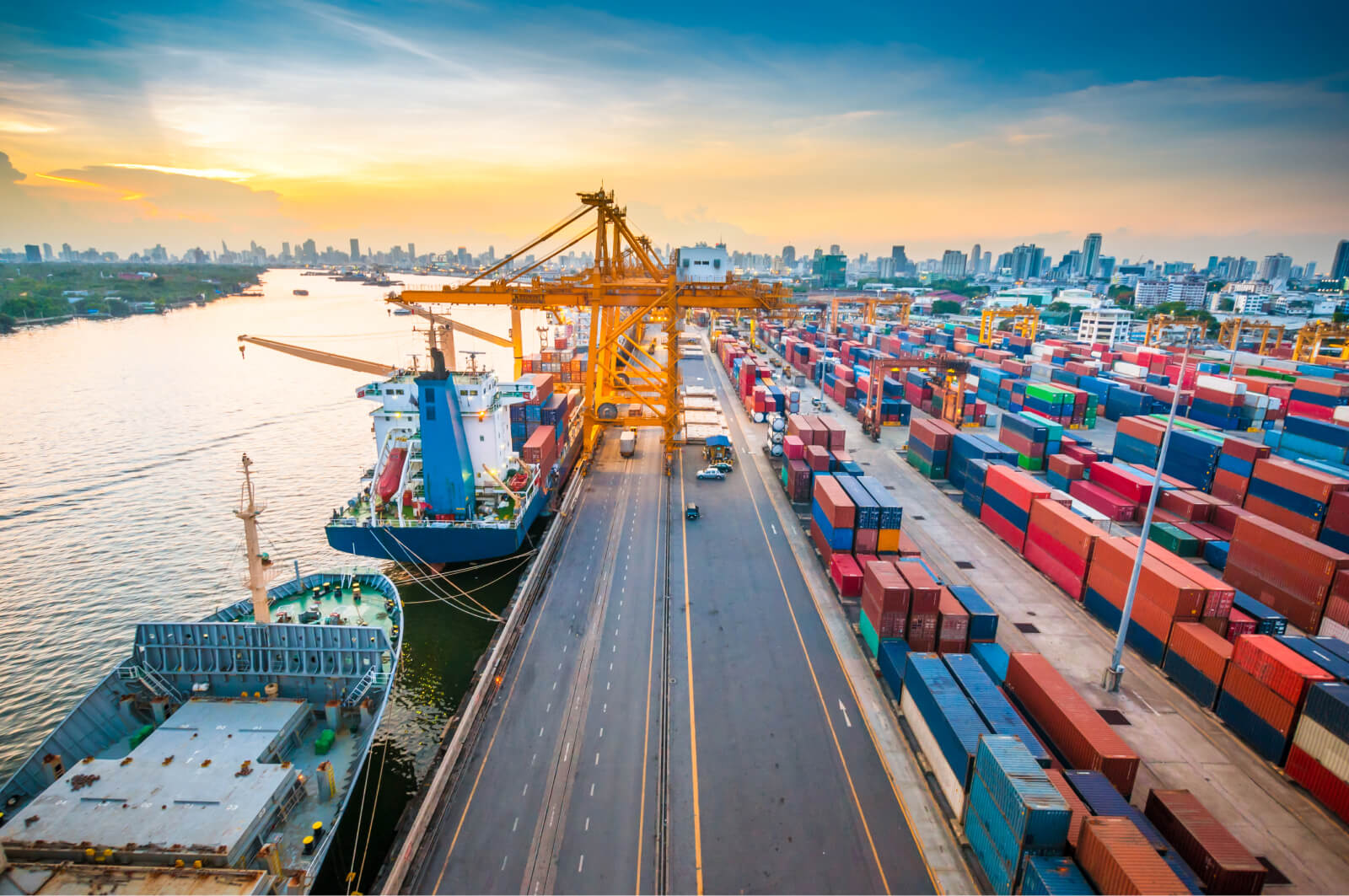
2020 was a tumultuous year for supply chains, and 2021 certainly followed suit. As we head into 2022, we take a look back at the major trends that occurred in ocean freight shipping over the last few years, and reflect on what your organization can do to proactively prevent major supply chain disruption.
During 2021, North America, Asia and Europe saw marked growth in shipment volume, with the highest increase seen in August. In June, shipments were up by 25% and 23% for Asia & Pacific and America, respectively, compared to January 2021.
Port congestion was a top challenge for international ocean freight shippers for 2021, especially when it came to ports in California. In March alone, the Port of Los Angeles processed 957,599 Twenty-Foot Equivalent Units (TEUs), a 113% increase compared to last year. As a whole, the Port of Los Angeles processed 10,677,609.70 TEUs for the full year 2021, a 15.89% increase from the year prior. The import dwell times at the Port of Long Beach fluctuated throughout 2021, with a high of 9.6 days.
In North America as a whole, we saw a peak in delays in February, but actually saw an overall decrease of 63% by December 2021.. In Asia, meanwhile, we saw an overall increase of 2% for the same time period in 2021, while EMEA saw the largest growth in delays of 13% from January to December 2021.
What did these increases in delays mean for ocean freight shippers? Their containers took longer to reach the port of discharge and most likely accumulated demurrage and detention charges due to these delays.
Export dwell time in Asia, where many goods being transported to the US begin their journey, saw huge fluctuations in the first half of 2021. The Port of Yantian, which saw a logjam due to a recent COVID-19 outbreak, saw dwell times as high as 16 days for exports.
Another large source of disruption was the March blockage of the Ever Given vessel in the Suez Canal, which prevented goods from both entering and exiting the canal. As a result, shipments were delayed across all sectors. Across the FourKites platform, we saw late shipments spike the most in the Retail sector (11%) during the week of the blockage. In the week following the initial blockage, Manufacturing and CPG saw reduction in late shipments during the next week of March 28, with a drop of 4% and 2%, respectively, while delays for Retail shipments continued to increase by 5%.
Containers are requirements for ocean shipments, but in 2021, there was a drastic shortage of containers throughout the globe. This was due to COVID-19 and the imbalance of trade that has taken place since 2020. The problem is not the number of containers itself, but where the containers are located. Ports in California, such as the Port of Los Angeles and Port of Long Beach, are seeing port congestion and cannot unload vessels fast enough.
The increase in demand in containers has caused the prices for containers to skyrocket. In fact, the Drewry World Container Index reached $10,377 per 40ft container in September 2021, which is more than 300% higher than the same week in 2020. Now, ocean freight shippers are paying significantly more for containers than they did a year ago, in the midst of the COVID-19 pandemic.
Adding another disruptive element into an already tumultuous environment, in Spring 2021, we saw strikes by port workers in Montreal and Charleston that caused significant supply chain disruption. Workers at the Port of Montreal striked for a week before the government passed back-to-work legislation. Organizations using the Port of Montreal for their container shipping were given a week’s notice for the strike to optimize shipping operations, but still saw disruptions; shipping volume was down 90% for the week of April 25th, the week of the strike.
Luckily for shippers, dwell times remained constant, most likely due to the port operations proactively expediting loads in the days of the strike.
There’s no doubt that significant port congestion and high container prices will continue well into 2022. This year, we will continue to see a gap between supply and demand for containers.With this in mind, how can shippers and international shippers proactively optimize their supply chains?
According to a FourKites survey, 50% of ocean freight management is done completely manually, and 42% of respondents are looking to upgrade their systems by investing further in digitization of the international shipping process. Organizations should look for digital solutions that not only provide tracking visibility, but integrate proactive exception management, port congestion data and predictive ETAs for when these delays occur.
Many times, tracking your container’s journey is a black hole. Shippers should look for solutions that provide tracking — not just over the water, but across road, rail, ocean, air freight and yard in one streamlined, integrated platform. They should also look for highly accurate predictive ETAs that go beyond the carrier ETA, integrating machine learning and external factors, such as delays, weather and congestion, into the calculation.
Ocean freight shipping is extremely complex, and traditional tracking solutions are no longer sufficient. To optimize your ocean operations, shippers should look for a solution that provides actionable insights around the rate and booking process, as well as document management visibility. Document requirements can cause unnecessary delays, decreases in customer satisfaction and the accumulation of detention and demurrage charges. By having a digital hub, like the one found in FourKites’ Dynamic Ocean, you can identify the required documents, assign tasks and ensure that these documents are completed on time and correctly in one streamlined platform.
To learn more about Dynamic Ocean, click here or contact us.